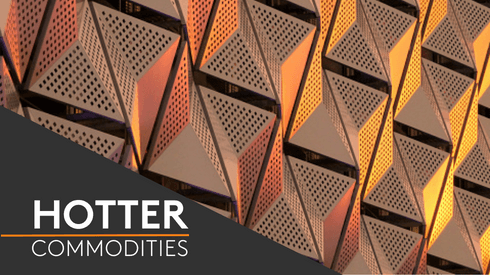The more I look at the state of the metal markets, the more convinced I am that Alice’s fall down the rabbit hole, journey through the looking glass and afternoon tea with the Hatter and March Hare were rational by comparison.
For a long time, stretching way back into history – even to those dark days before the London Metal Exchange – market prices were largely determined by supply and demand, generated by producers and consumers of metal.
When prices rose, producers would be tempted to sell and, when they fell, consumers would be tempted to buy.
Oiling the wheels and filling the gaps were the traders and speculators, who profited by taking a contrary view when they felt that specific circumstances dictated that prices might be moving in an anomalous way. Note the use of the words “traders and speculators”, not “investors”.
In a traditional capitalist economic model, the more normal route for investors was to put their money into the equity of mining companies or metal-consuming manufacturers.
But maybe we’re running a bit ahead here. For the sake of clarity, speculators are those who buy or sell assets in the hope or expectation of a relatively imminent price change. Investors, typically, put their funds at the disposal of corporations, from which they anticipate seeing an income stream of dividends or interest, as well as the hope of capital appreciation.
Therefore, the current inheritors of the speculator tag are the hedge funds, who by and large buy and sell in expectation of rapid, relatively significant, price moves. Such is the power of the funds at their disposal that from time to time they also initiate the price moves from which they hope to profit.
But that’s fine: they fulfil an essential role in commodity markets, because they buy and sell in response to whatever trigger signal they see. Sometimes they’re right, sometimes wrong. But the balance of the market is still there: producers and consumers doing what they do as speculators oil the wheels.
So where does Alice come in? Well, she’s at the tea party meeting the investors, and they’re telling her about index funds, buy and hold funds, ETFs and things like that.
She’s learning that “copper is an asset class to which she must be exposed”, that buy and hold is a great strategy. “Don’t worry about mountains of metals being stockpiled, and that producers can smelt metal; forget selling it to people to use. Instead, just put it in a big pile and sell certificates for bits of it to punters – because it will always go up, won’t it?”
Well, maybe it will. And, if the sponsors of the investment funds can keep finding new players to keep buying, then yes, the price will go up – until there’s no one left to buy and then it will all look quite horrible.
However the clever money managers dress it up, commodity speculation is a strategy based on capital appreciation. Metals do not produce dividends or interest, nor do they, in general, produce a lease income like the quasi-currency, gold.
What happens is that the investors will get longer and longer, and, as they have to lend out of the first month, the contango will get wider and wider – eating into the inflation hedge they have been promised.
And then one day, the market will turn and they will be left high and dry, with no way to sell out of the long positions, because, in the market parlance, there’s no one left to buy.
One very good reason why the market will turn comes straight from conventional economic wisdom. As the price of a commodity rises, so more effort and investment will be put into exploration and development of new sources of supply, as well as potential substitutions. If so-called investment money pushes prices higher for longer than basic supply/demand expectations suggest, then more production will come on stream, which will ultimately depress the price.
I appreciate there is a time lag, but that time lag has been accommodated many times in the past. China is a huge consumer, but nevertheless stockpiles of metals are growing, making the obvious point that even China can’t absorb and consume all the metal available.
My favourite story is the aluminium producer that is considering launching an aluminium ETF. The proposal would appear to be that they would smelt – let’s guess – a million tonnes of aluminium, which they would not sell to customers to make into aeroplanes, cars, packaging or whatever, but would rather just hold off the market and sell share certificates in to the public.
Well, I’ve got a better idea – why bother to smelt it?
Why not just point to the pile of alumina and the hydro power plant and sell that as the ETF?
It’s a much greener idea and won’t use all that electricity unnecessarily. And then what the public would be buying is a share in the smelters’ ability to produce aluminium when the market needed it.
It would, in fact, be rather like investing in the equity of the smelter company.
That looks almost like full circle; perhaps we should tell Alice to come back through the looking glass, climb up from the bottom of the rabbit hole, and that if she wants to invest in metals, as opposed to speculating, her best bet is to find a good company in the bottom quartile of the cost curve and buy its equity or debt.





